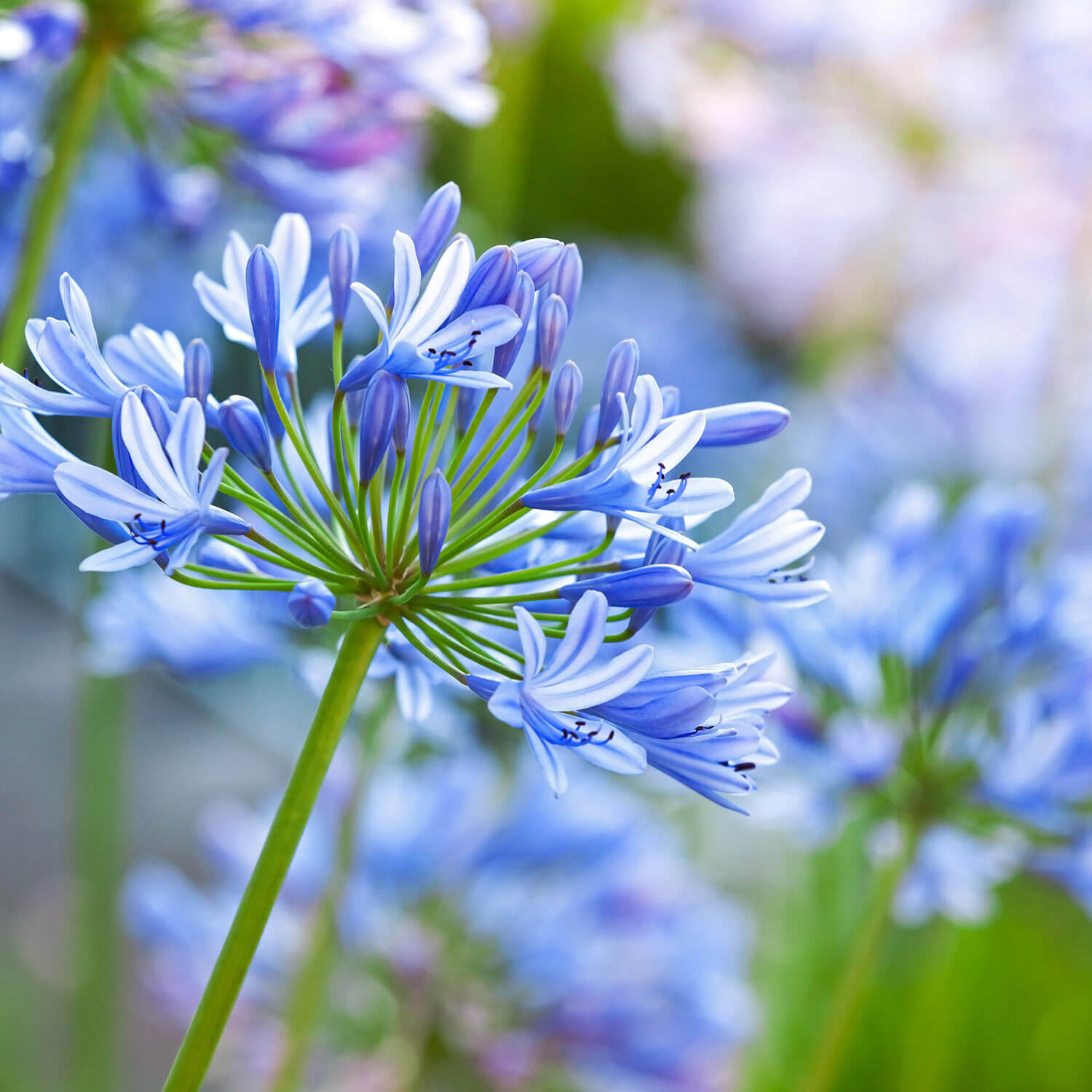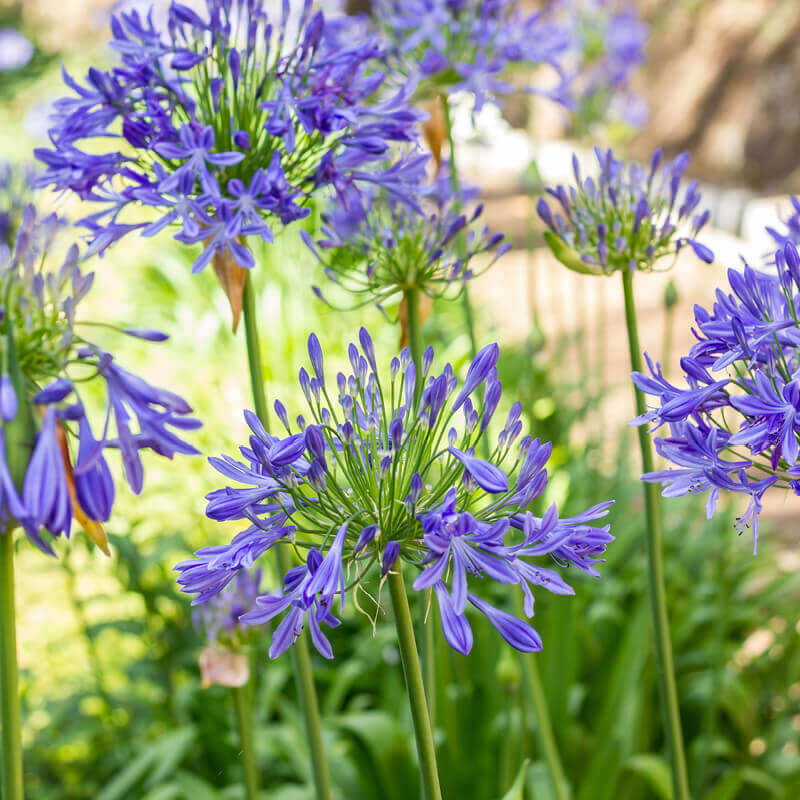Sensational Agapanthus: Enhancing Your Garden's Elegance
Sensational Agapanthus: Enhancing Your Garden's Elegance
Blog Article
Understanding the Art of Agapanthus Treatment: Important Actions for Healthy And Balanced Development and Lively Blossoms
In the realm of cultivation, the cultivation of agapanthus stands as a satisfying endeavor for those who seek to nurture these sophisticated flowering plants. With their striking flowers and graceful foliage, agapanthus has captured the interest of gardeners worldwide. Nevertheless, accomplishing optimum growth and lively blooms calls for a nuanced approach that incorporates different necessary actions. From picking the best selection to mastering pruning methods, the journey towards cultivating thriving agapanthus plants is complex and holds the vital to unlocking the complete capacity of these agricultural gems.

Choosing the Right Agapanthus Range

When selecting the appropriate Agapanthus range for your garden, consider elements such as climate suitability, flower color, and growth behavior. Agapanthus, typically recognized as Lily of the Nile or African lily, is available in a range of colors ranging from shades of purple and blue to white. Pick a flower shade that enhances your existing yard palette to produce an unified landscape. Additionally, take into consideration the climate in your region to ensure the Agapanthus variety you select can thrive in your particular conditions. Some selections are more tolerant of chilly temperature levels, while others choose warmer climates. Comprehending the growth habit of various Agapanthus selections is important for correct positioning within your garden. Some ranges have a clumping growth routine, ideal for boundaries or containers, while others have a more spreading nature, suitable for ground cover or mass growings. By carefully evaluating these factors, you can select the best Agapanthus variety to enhance the elegance of your yard.
Ideal Planting Problems
Taking into consideration the ideal ecological demands is vital for effective Agapanthus growing. Agapanthus plants are sensitive to chilly temperature levels and need to be shielded from frost during winter season months.
To guarantee healthy growth and lively flowers, plant Agapanthus light bulbs at a deepness of about 2-4 inches and room them 8-12 inches apart. Including natural matter, such as compost, to the soil can improve water drainage and fertility, advertising durable origin growth. Mulching around the base of the plants helps keep dampness and reduces weed growth. Routine watering is important, particularly during the expanding period, to keep the soil continually wet however not waterlogged.
Watering and Feeding Tips
Keeping proper wetness degrees and providing vital nutrients are vital elements in the treatment routine for Agapanthus plants. When it comes to watering Agapanthus, it is vital to strike an equilibrium. These plants choose regularly damp dirt yet are vulnerable to root rot if overwatered.
Feeding Agapanthus is important for advertising healthy and balanced development and respected blossoms. Use a balanced fertilizer, such visit the website as a 10-10-10 formula, in the early spring as new growth arises. By adhering to these watering and feeding pointers, you can guarantee your Agapanthus plants grow and produce vibrant, long-lasting blossoms.
Trimming Methods for Agapanthus
Trimming Agapanthus plants at the ideal times and with correct methods is important for preserving their health and promoting optimum development and blooming. The suitable time to trim Agapanthus is in late winter season or very early spring before new development arises. Begin by eliminating any kind of yellowing or dead fallen leaves near the base of the plant. Cut them as close to the ground as feasible without damaging the arising shoots.
For flowered stems, wait up until the blooms have actually perished and afterwards cut them back to the base. This not only cleans the plant's look yet additionally encourages the growth of new flower buds. Deadheading invested flowers can additionally redirect the plant's power right into producing even more flowers rather than establishing seeds. Nevertheless, if you desire to gather seeds for breeding, leave some flowers to completely dry and mature on the plant.
Bear in mind to use tidy, sharp devices to make specific cuts and minimize the threat of introducing illness. Agapanthus. Normal trimming will assist maintain your Agapanthus looking cool and healthy and balanced find out here while guaranteeing a plentiful display of attractive blossoms
Dealing With Typical Bugs and Conditions
After making certain correct trimming strategies for Agapanthus, it is important to attend to usual bugs and illness that can affect the health and wellness and vigor of these plants. One typical insect that affects Agapanthus is the Agapanthus gall midge.
Another common concern is fungal fallen leave spot, which provides as dark lesions on the leaves. To avoid fungal illness, make certain excellent air blood circulation around the plants, prevent above watering, and eliminate any kind of contaminated leaves promptly. Furthermore, Agapanthus plants can experience from root rot if they are grown in inadequately draining pipes soil. To avoid this, plant Agapanthus in well-draining dirt and avoid overwatering. By being alert and taking timely action versus diseases and bugs, you can aid your Agapanthus plants prosper and generate vibrant blossoms.

Verdict
Finally, grasping the art of agapanthus care includes choosing the best range, giving ideal planting conditions, correct watering and feeding, appropriate pruning techniques, and addressing usual parasites and diseases. By adhering to these important steps, you can make sure healthy and balanced growth and dynamic flowers for your agapanthus plants. Remember to on a Continued regular basis keep track of and preserve your plants to promote their general health and durability.
To make certain healthy growth and dynamic blooms, plant Agapanthus light bulbs at a depth of regarding 2-4 inches and space them 8-12 inches apart. By adhering to these watering and feeding tips, you can guarantee your Agapanthus plants thrive and generate vibrant, long-lasting blooms.
One usual bug that affects Agapanthus is the Agapanthus gall midge. Furthermore, Agapanthus plants can suffer from origin rot if they are grown in inadequately draining pipes dirt. By following these essential actions, you can guarantee healthy development and vibrant blossoms for your agapanthus plants.
Report this page